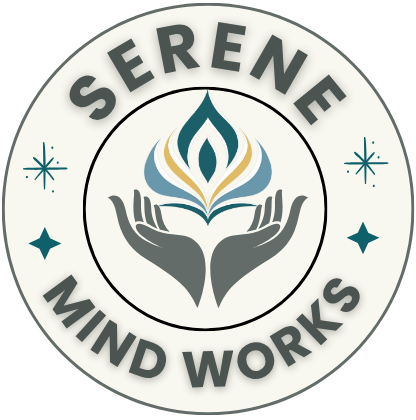
Mindfulness is all about being totally present in the here and now. It’s paying attention to what you’re doing and feeling without casting any judgment on it. Have you ever found yourself stuck on autopilot, just cruising through your day without really tuning in? Mindfulness helps you hit pause on that mindless loop.
People from all walks of life are tapping into mindfulness these days because of its potential benefits, like reducing stress, boosting creativity, and improving overall well-being. It’s not just for yogis or meditation gurus – it can work wonders for anyone. Even just a few minutes a day can make a huge difference in how you feel and interact with the world.
In this article, I’m diving into some key areas of mindfulness to give you the scoop. Ever asked yourself how to start practicing mindfulness or what techniques there are? I’m covering what mindfulness practices are out there, how the 5 R’s can change your approach to life, the techniques to try, and even the quirky 3 C’s. So hang tight, and let’s see how this can play out in your routine.
Every section drops little nuggets of wisdom about why these practices rock and how they can fit into even the busiest schedules. You’ll find it’s more than just sitting in a quiet room thinking about nothing; it’s a practical toolkit for building a life that’s rooted in awareness and presence.
Exploring 5 Ways to Practice Mindfulness
- Mindful breathing is like pressing the reset button for your mind. Just focus on your inhales and exhales for a few minutes each day. This isn’t just about slowing down; it’s about giving your mind a moment to chill and find clarity.
- A body scan helps you connect with your physical self. Lying down comfortably, bring attention to one area of your body at a time, starting from your toes up to your head. Notice any tension or sensations without judgment. It’s a great way to understand how your body feels at any given moment.
- Mindful eating turns every meal into a joyful experience. Instead of gobbling down your food, savor each bite – notice the flavors, textures, and aromas. This practice not only enhances your appreciation for food but also helps with digestion and recognizing hunger cues.
- Walking meditation might be your go-to if sitting still isn’t your thing. Just walk at a comfortable pace, focusing on the sensation of your feet touching the ground and the rhythm of your steps. This practice boosts mental clarity and increases your awareness of the present moment.
- Guided imagery uses your imagination to relax your mind and body. Picture yourself in a serene place, like a forest or a beach. Imagine the sounds, smells, and sights around you. It’s a perfect escape for finding peace, even in the midst of chaos.
Decoding the 5 R’s of Mindfulness
- Recognition is all about being aware of your thoughts, emotions, and physical sensations. It’s acknowledging what’s happening inside you without immediately reacting to it. This awareness gives you a clearer picture and helps you process your feelings more constructively.
- Respond with intention instead of letting knee-jerk reactions take over. When you’re mindful, you can choose how to react carefully, which reduces impulsive decision-making and helps you handle situations in a more balanced way.
- Relaxation is a major goal in mindfulness, where you learn to let go of unnecessary stress and tension. It’s about finding those techniques that help you unwind and refresh your spirit.
- Remaining present involves keeping your focus on the current moment, detaching from worries about the past or future. This practice helps reduce anxiety and fosters a peace of mind that can be elusive in today’s fast-paced world.
- Reflect is your chance to look back on experiences with a thoughtful lens. It’s analyzing situations, your reactions, and what you can learn from them. Reflection deepens your understanding of how mindfulness benefits your overall life journey.
Diving Into Four Fundamental Mindfulness Techniques
Transcendental Meditation is an age-old practice that involves silently repeating a mantra. This technique helps quiet your mind and eventually leads to a profound state of restful alertness. Even just a few minutes a day can help you find clarity and relaxation.
Loving-Kindness Meditation focuses on developing compassion towards yourself and others. By mentally sending goodwill and kindness during meditation, this practice opens your heart, reduces anger, and fosters positive connections with those around you.
Mindfulness-Based Stress Reduction (MBSR) packs an effective punch against stress through various mindful techniques like body scans and meditation. Developed by Jon Kabat-Zinn, MBSR combines mindfulness and yoga to address stress, pain, and illness, empowering you to take charge of your own health.
Insight Meditation helps cultivate deep awareness and insight. It’s an approach that’s all about noticing the thoughts and emotions that arise without any judgment or attachment. As you practice, insight meditation encourages self-awareness, helping you understand your own mind and behavior more effectively.
Understanding the 3 C’s of Mindfulness
Clarity: Is about seeing things as they truly are. Practicing mindfulness helps wipe away the mental fog, so you can better understand your thoughts and emotions with minimal distraction or distortion. It provides a clearer window into your day-to-day experiences.
Concentration: Builds your ability to focus amidst a world full of interruptions. It’s not just about having your mind not wander; it’s about engaging fully with whatever you’re doing. Whether it’s work, a hobby, or just enjoying a conversation, concentration nurtures deeper involvement and productivity.
Calmness: The anchor in the storm helps you maintain peace even when life throws curveballs your way. Mindfulness promotes a serene approach to challenges, ensuring that stress doesn’t easily knock you off balance.
